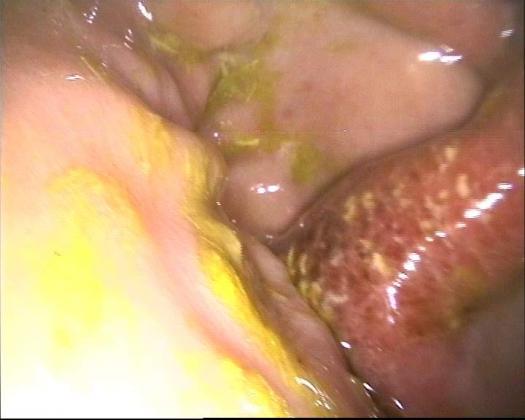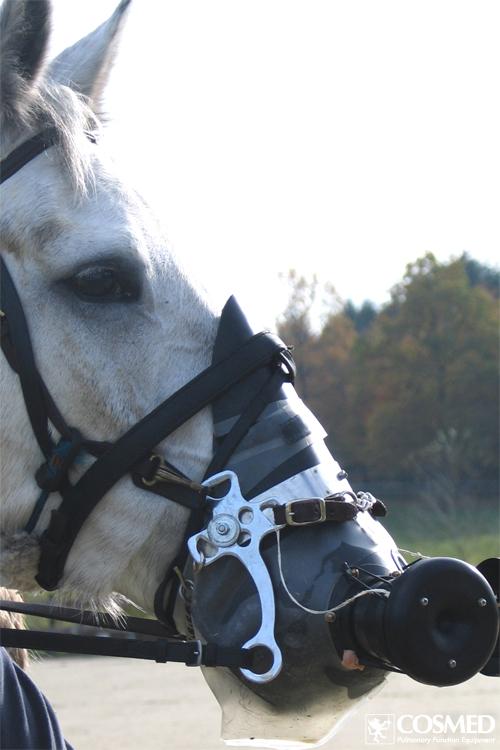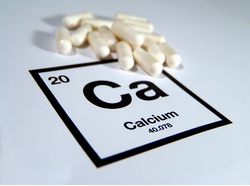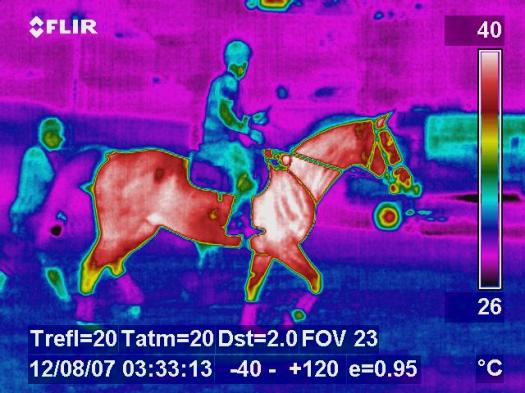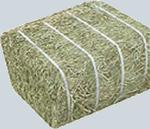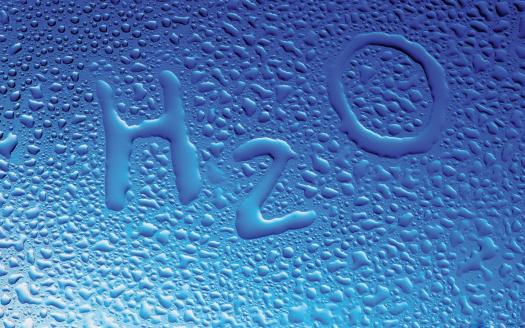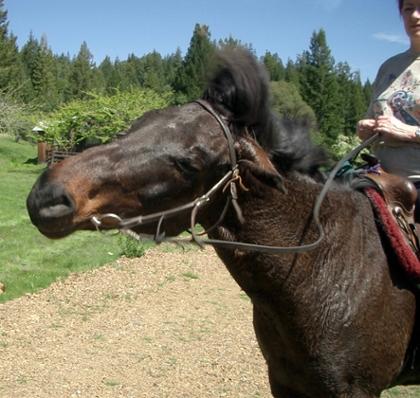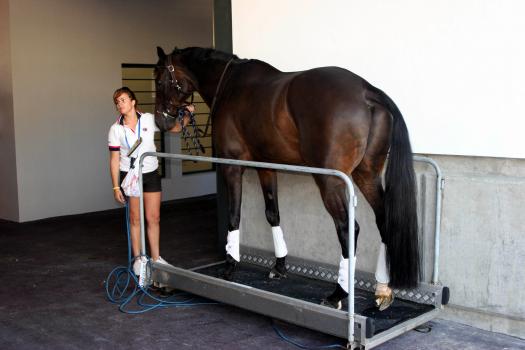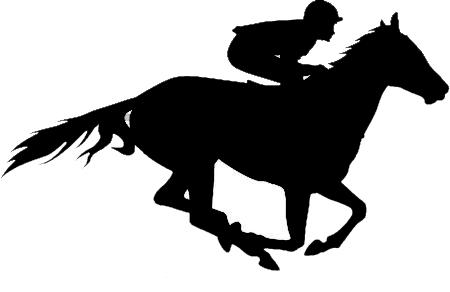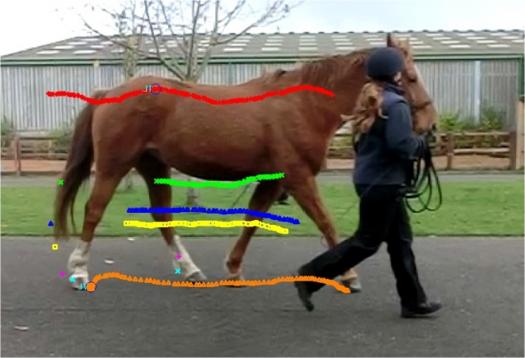An Equine Science Knowledge Quiz!

- 1.
In horses Omeprazole is most effective for treating...
- A.
Glandular and Squamous gastric ulcers
- B.
Glandular gastric ulcers
- C.
Squamous gastric ulcers
- D.
Pyloric gastric ulcers
Correct Answer
C. Squamous gastric ulcersExplanation
Omeprazole is most effective for treating squamous gastric ulcers in horses. Squamous gastric ulcers are a common type of ulcer that occurs in the upper portion of the horse's stomach. Omeprazole is a proton pump inhibitor that helps reduce the production of stomach acid, which can help alleviate the symptoms and promote healing of the ulcers. It is specifically targeted towards treating squamous gastric ulcers rather than other types of gastric ulcers.Rate this question:
-
- 2.
The maximum capacity to use oxygen (VO2max) is related to middle and long-distance running ability in human athletes. Elite human distance runners have VO2max around 60-100 ml/min/kg. What is the highest value reported for a horse?
- A.
~100 ml/min/kg
- B.
~150 ml/min/kg
- C.
~200 ml/min/kg
- D.
~300 ml/min/kg
Correct Answer
C. ~200 ml/min/kgExplanation
Elite human distance runners have a VO2max ranging from 60-100 ml/min/kg, which is the maximum capacity to use oxygen. The question asks for the highest reported value for a horse. Since the given options range from 100-300 ml/min/kg, the highest value reported for a horse would be ~200 ml/min/kg.Rate this question:
-
- 3.
Which statement best describes the calming effect of calcium in horses?
- A.
There is no rationale and no scientific evidence that calcium has a calming effect in horses
- B.
Calcium causes excitement in horses
- C.
There is good evidence to show calcium has a calming effect on horses
- D.
Calcium only calms horses that are deficient in calcium
Correct Answer
A. There is no rationale and no scientific evidence that calcium has a calming effect in horsesExplanation
The given answer states that there is no rationale and no scientific evidence to support the claim that calcium has a calming effect in horses. This implies that there is no credible basis or research to suggest that calcium can calm horses.Rate this question:
-
- 4.
The best way to cool a hot horse is..
- A.
Apply ice packs to the large blood vessels e.g. on the neck and between the legs
- B.
Sponge lukewarm water over the whole body
- C.
Cover the horse with towels soaked in cold water
- D.
Apply ice cold water over the whole body
- E.
Apply ice cold water focussing on the large hindlimb muscles
Correct Answer
D. Apply ice cold water over the whole bodyExplanation
Applying ice cold water over the whole body is the best way to cool a hot horse because it helps to rapidly lower the horse's body temperature. This method is effective because it covers a larger surface area of the horse's body, allowing for more efficient cooling. The cold water helps to dissipate heat from the horse's skin and promotes evaporation, which aids in cooling. Additionally, applying ice cold water over the whole body helps to prevent overheating and reduce the risk of heat-related complications in the horse.Rate this question:
-
- 5.
Approximately how long does it take a horse's hindgut to adjust to a change in forage?
- A.
6-12h
- B.
24-48h
- C.
1-2 weeks
- D.
2-4 weeks
- E.
1-3 months
Correct Answer
D. 2-4 weeksExplanation
The correct answer is 2-4 weeks. When a horse's forage is changed, it takes time for their hindgut, which is responsible for digesting fiber, to adjust to the new diet. It can take up to 2-4 weeks for the microbial population in the hindgut to adapt to the different types of fiber and nutrients present in the new forage. During this adjustment period, it is important to make any dietary changes gradually to avoid digestive upset in the horse.Rate this question:
-
- 6.
Horses hold their breath when jumping.
- A.
True
- B.
False
Correct Answer
A. TrueExplanation
Horses hold their breath when jumping because it helps them stabilize their bodies and maintain balance in the air. By holding their breath, horses can tighten their abdominal muscles, which provides additional support to their back and helps them clear the jump more efficiently. This technique is commonly used by horses to ensure a smooth and controlled jump over obstacles.Rate this question:
-
- 7.
If you are feeding your horse 10kg of hay a day with a dry matter of 80%, approximately how much haylage with a dry matter of 40% should you feed? [assume they are similar nutritional value in terms of energy, protein, etc on a dry matter basis]
- A.
5kg
- B.
10kg
- C.
15kg
- D.
20kg
Correct Answer
D. 20kgExplanation
Since the nutritional value of hay and haylage is assumed to be similar on a dry matter basis, we can calculate the amount of haylage needed by comparing the dry matter percentages. The hay has a dry matter of 80%, while the haylage has a dry matter of 40%. To maintain the same amount of dry matter intake, we need to double the amount of haylage. Therefore, if we are feeding 10kg of hay with 80% dry matter, we should feed 20kg of haylage with 40% dry matter.Rate this question:
-
- 8.
Which of the following tissues in the horse's body has the highest water content?
- A.
Lung
- B.
Bone
- C.
Brain
- D.
Kidney
- E.
Skin
Correct Answer
A. LungExplanation
The lung tissue in a horse's body has the highest water content compared to the other tissues listed. This is because the lungs are responsible for exchanging gases, and to facilitate this process, they need to be moist. The high water content helps to keep the lungs hydrated and allows for efficient gas exchange.Rate this question:
-
- 9.
What is the main antioxidant Vitamin lining the horse's airways?
- A.
Vitamin A
- B.
Vitamin B
- C.
Vitamin C
- D.
Vitamin D
- E.
Vitamin E
Correct Answer
C. Vitamin CExplanation
Vitamin C is the main antioxidant vitamin lining the horse's airways. Antioxidants help protect cells from damage caused by free radicals, which are unstable molecules that can harm cells. In the airways, vitamin C plays a crucial role in neutralizing free radicals and preventing oxidative stress. It helps maintain the health and integrity of the airway tissues, reducing the risk of respiratory issues in horses. Vitamin C also supports the immune system and aids in collagen production, further promoting the overall respiratory health of horses.Rate this question:
-
- 10.
Headshaking in horses is often considered to be related to dysfunction of the
- A.
Phrenic nerve
- B.
Vagus nerve
- C.
Optic nerve
- D.
Trigeminal nerve
- E.
Olfactory nerve
Correct Answer
D. Trigeminal nerveExplanation
Headshaking in horses is often considered to be related to dysfunction of the trigeminal nerve. The trigeminal nerve is responsible for carrying sensory information from the face to the brain. Dysfunction of this nerve can lead to abnormal facial sensations, which may cause the horse to shake its head. Other nerves listed, such as the phrenic nerve, vagus nerve, optic nerve, and olfactory nerve, are not directly involved in facial sensations and therefore are less likely to be related to headshaking.Rate this question:
-
- 11.
Approximately how much of a live horse's body weight is water?
- A.
20%
- B.
30%
- C.
50%
- D.
60%
- E.
80%
Correct Answer
D. 60%Explanation
Approximately 60% of a live horse's body weight is water. This is because water is essential for various bodily functions such as digestion, circulation, temperature regulation, and waste removal. Horses require a significant amount of water to stay hydrated and maintain their overall health and well-being.Rate this question:
-
- 12.
During exercise, horses...
- A.
Breathe only through their nostrils
- B.
Breathe only through the mouth
- C.
Breathe through both their mouth and nostrils
- D.
Switch between mouth and nasal breathing
Correct Answer
A. Breathe only through their nostrilsExplanation
Horses breathe only through their nostrils during exercise because their nasal passages are specifically designed to regulate the amount of air they take in. The nasal passages warm and filter the air before it reaches the lungs, which helps to prevent respiratory issues. Breathing solely through the nostrils also allows horses to maintain a steady rhythm and control their breathing more effectively during physical exertion.Rate this question:
-
- 13.
Which equine gait is most efficient?
- A.
Walk
- B.
Trot
- C.
Canter
- D.
Gallop
Correct Answer
C. CanterExplanation
The canter is the most efficient equine gait because it allows the horse to cover ground quickly while still maintaining balance and stability. The canter is a three-beat gait where the horse's feet move in a specific sequence, providing a smooth and controlled motion. This gait allows the horse to conserve energy and maintain a steady pace for longer periods compared to the faster gallop. The walk and trot are slower and less efficient gaits compared to the canter.Rate this question:
-
- 14.
Horse diets are most likely to be deficient in...
- A.
Copper
- B.
Iron
- C.
Calcium
- D.
Boron
- E.
Sodium
Correct Answer
E. SodiumExplanation
Horses are herbivores and their natural diet consists mainly of grass and other forage. However, grass and forage are generally low in sodium content. Therefore, it is likely that horse diets may be deficient in sodium. Sodium is an essential mineral that plays a crucial role in maintaining proper nerve and muscle function, as well as regulating fluid balance in the body. Horses may require additional sodium supplementation to meet their dietary needs.Rate this question:
-
- 15.
Which of the following have the best evidence for stimulating muscle development in horses when combined with appropriate exercise, sufficient energy intake and adequate protein?
- A.
Gamma Oryzanol (Rice Bran Oil)
- B.
Leucine
- C.
Lysine
- D.
Spirulina
- E.
Creatine
Correct Answer
B. LeucineExplanation
Leucine has the best evidence for stimulating muscle development in horses when combined with appropriate exercise, sufficient energy intake, and adequate protein. Leucine is an essential amino acid that plays a crucial role in muscle protein synthesis. It activates the mTOR pathway, which is responsible for promoting muscle growth and repair. Studies have shown that leucine supplementation can enhance muscle protein synthesis and improve muscle mass and strength in horses. Therefore, when all the necessary factors are present, leucine is the most effective in stimulating muscle development in horses.Rate this question:
-
Quiz Review Timeline +
Our quizzes are rigorously reviewed, monitored and continuously updated by our expert board to maintain accuracy, relevance, and timeliness.
-
Current Version
-
Mar 21, 2023Quiz Edited by
ProProfs Editorial Team -
Jan 04, 2018Quiz Created by
David Marlin
- Amphibian Quizzes
- Bird Quizzes
- Cat Quizzes
- Dinosaur Quizzes
- Dog Quizzes
- Emperor Penguin Quizzes
- Endangered Species Quizzes
- Fish Quizzes
- Goat Quizzes
- Hamster Quizzes
- Horse Quizzes
- Insect Quizzes
- Invertebrate Quizzes
- Mammal Quizzes
- Mouse Quizzes
- Nematode Quizzes
- Pet Quizzes
- Pig Quizzes
- Rabbit Quizzes
- Reptile Quizzes
- Sheep Quizzes
- Wolf Quizzes
- Zoo Quizzes
 Back to top
Back to top



